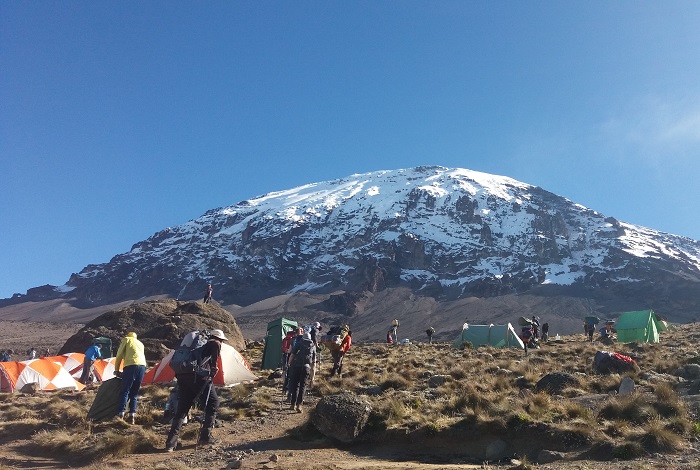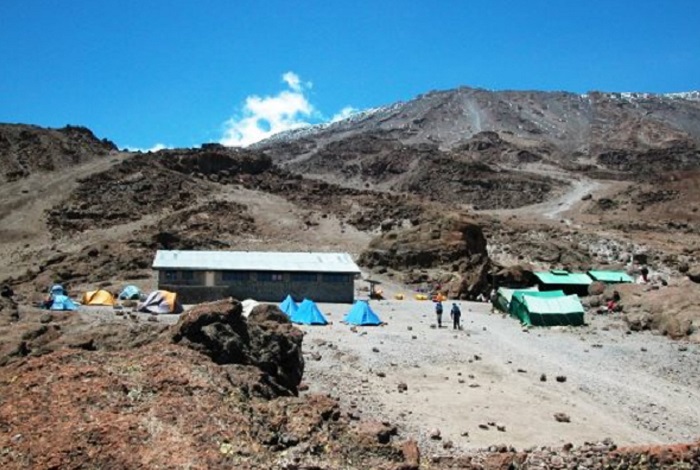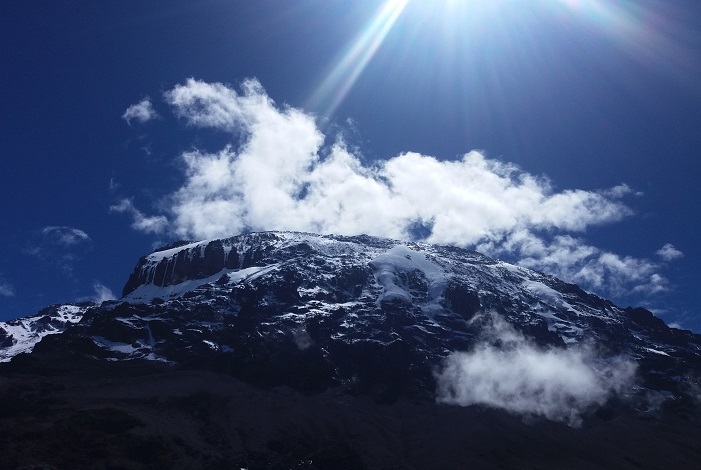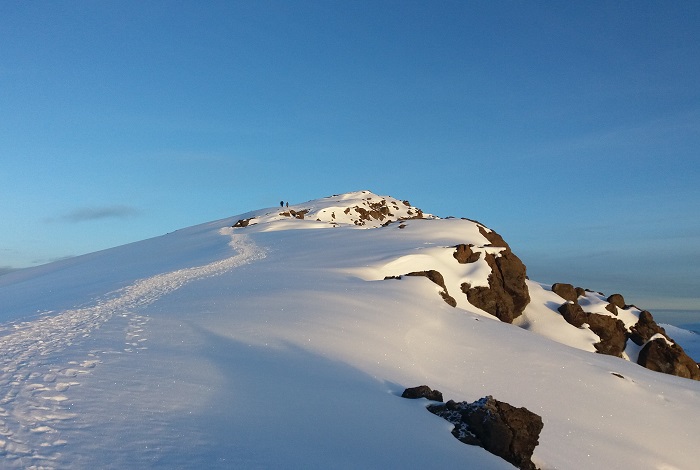Mt. KILIMANJARO GENERAL INFORMATION
About Kilimanjaro
Mount Kilimanjaro is the highest mountain in Africa and the highest single free-standing mountain above sea level in the world:
5,895 metres (19,341 ft) above sea level and about 4,900 metres (16,100 ft) above its plateau base.
Kilimanjaro is the fourth most topographically prominent peak on Earth. It is part of Kilimanjaro National Park and is
a major hiking and climbing destination.
Kilimanjaro is very popular with both experienced hikers and first time adventurers because it is considered
to be the easiest of the seven summits on the world. Scaling the mountain requires no technical skills or equipment, such
as rope, harness, crampons or ice axe. Therefore, it is a hiking or “walk up” peak, not a mountaineering or
climbing peak.
MT KILIMANJARO:

WEATHER OF MT KILIMANJARO:
Kilimanjaro's weather is largely dictated by it's geological feature of being a lone free standing mountain. The weather on Kilimanjaro can range from below freezing to hot and humid based on the season and altitude. Season to season temperature changes tend to be minor and more largely driven by time of day. Kilimanjaro is also made up of five major ecological climate zones, starting from subtropical and ending with "arctic", each zone with it's own weather condition. Then you throw in not one, but two monsoon seasons
and just about every type of weather condition is possible.
SUMMIT WEATHER
Your ultimate goal is Kilimanjaro's summit at 19,491 ft. (5,895-m) above sea level. You may have a warm first day in Moshi but due to the high elevation, but due to the high elevation it's cold on the summit. See below. The temperature ranges around 21°F (-6°C) which means no rain, and the wind is generally light. But all you feel is the feeling of wonderment of reaching the
highest point in Africa, and rising to the challenge of your lifetime.
BEST TIME FOR TREKKING MT KILIMANJARO:
It is possible to trek Kilimanjaro all-year-round. However,
certain months are characterised by colder weather, more rain and potentially more snow on the summit.
There are two distinct trekking seasons which constitute the best time to climb Kilimanjaro. They are January-March and June-October.
January-March is generally colder than June-October and there is a higher probability of encountering snow on the summit. For some this might be seen as a negative, but the benefits of a January-March trek is that the slopes are
often quieter at this time of the year.
Snow fall and cold temperatures are common during December-May
BEST KILIMANJARO ROUTE:
There is no single best Mt. Kilimanjaro climb route.Each Kilimanjaro route has it's own pros and cons. Some are great for scenery, but not so great for acclimatisation.Others offer high summit success rates but are also quite busy at certain times of the year. You may read more about kilimanjaro routes here
TREKKING PREPARATION & EQUIPMENTS:
Climbing Kilimanjaro is like hiking from summer to winter in a matter of days. Your apparel will reflect this as well.
You will need technical clothing such as a waterproof jacket, fleece jacket and several baselayers. Cold weather gear such as hats, gloves, down jacket, and a warm sleeping bag are essential.
Please Note : You may hire all these equipment when you arrival in Moshi


